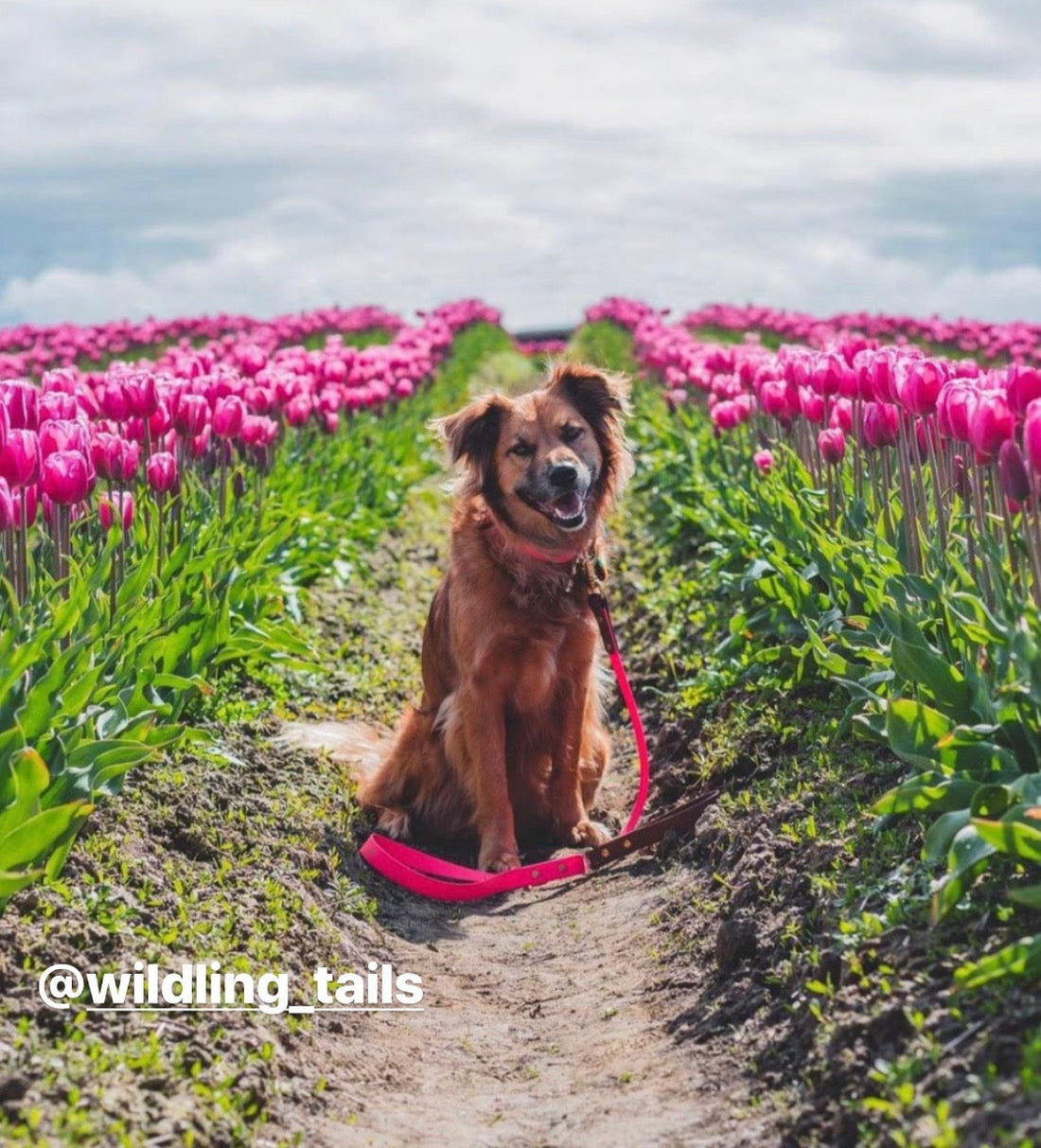
Spring Plants That Are Dangerous for Pets
Share
Spring Plants That Are Dangerous for Pets
There's nothing more beautiful than spring flowers that start blooming after the cold winter days are behind us. It always makes walks longer and more enjoyable, and as the saying goes, we should all stop and smell the roses. But it’s important to keep in mind that some plants and fertilizers can be toxic to your pet in the springtime. Interacting and ingesting flowers, whether they are sniffed or eaten, can get dangerous because not all beautiful flowers are harmless. If your dog ingests or sniffs a toxic flowers or plants, they will show a number of symptoms. But the symptoms depend on the plant itself.
According to ASPCA Animal Poison Control Center the following plants are poisonous for your pets:
- Autumn Crocus There are two Crocus plants: one that blooms in the spring (Crocus species) and the other in the autumn Colchicum autumnal). The spring plants are more common and are part of the Iridaceae family. These ingestions can cause general gastrointestinal upset including vomiting and diarrhea. These should not be mistaken for Autumn Crocus, part of the Liliaceae family, which contain colchicine. The Autumn Crocus is highly toxic and can cause severe vomiting, gastrointestinal bleeding, liver and kidney damage, and respiratory failure. If you’re not sure what plant it is, bring your pet to their veterinarian immediately for care. Signs may be seen immediately but can be delayed for days.
- Azalea In the same family as rhododendrons, azaleas can have serious effects on pets. Eating even a few leaves can result in vomiting, diarrhea and excessive drooling; without immediate veterinary attention, the pet could fall into a coma and possibly die.
- Begonias Begonias (Begonia spp.) are popular plants, because they are generally easy to grow, can thrive in many conditions and produce gorgeous blooms. But if you’re a dog or cat owner, begonias may need to stay out of your garden. Most of the toxins are concentrated in the tuber or underground stem of the plant and can cause serious burning and irritation of the mouth, tongue and lips; excessive drooling; vomiting and difficulty swallowing.
- Buttercups You may dream of frolicking through a meadow of buttercups ( Ranunculus spp.) with your dog or cat, but should your animal nibble on this flower, it could lead to vomiting, diarrhea, anorexia, excessive salivation and a drunken gait.
- Daffodils Usually one of the first plants to bloom in spring. These flowers contain lycorine, an alkaloid with strong emetic properties (something that triggers vomiting). Ingestion of the bulb, plant or flower can cause severe vomiting, diarrhea, abdominal pain, and even possible cardiac arrhythmias or respiratory depression. Crystals are found in the outer layer of the bulbs, similar to hyacinths, which cause severe tissue irritation and secondary drooling. Daffodil ingestions can result in more severe symptoms so if an exposure is witnessed or symptoms are seen, we recommend seeking veterinary care for further supportive care.
- Jimson Weeds Also known as devil’s trumpet, the Jimson weed (Datura stramonium) can be moderately toxic to cats and dogs and typically infests farmland and pastures. Accidental ingestion can cause restlessness, drunken walking and respiratory failure.
- Lilies You may be tempted to decorate your home with a beautiful bouquet of lilies, but doing so could spell trouble for your cat. Members of the true lily (Lilium) and day lily (Hemerocallis) families have been shown to cause acute kidney failure in felines. Some examples of true lilies include Easter lilies (L. longiflorum), tiger lilies (L. tigrinum) and Japanese Show lilies (L. speciosum). Even a small amount of exposure (a few bites on a leaf, ingestion of pollen, etc.) may result in kidney failure. Cats often vomit within a few hours of exposure and become lethargic.
- Lily of the Valley The Convallaria majalis plant contains cardiac glycosides which will cause symptoms similar to digitalis (foxglove) ingestion. These symptoms include vomiting, diarrhea, a drop in heart rate, severe cardiac arrhythmias, and possibly seizures. Pets with any known exposure to this plant should be examined and evaluated by a veterinarian and treated symptomatically.
- Tulips and Hyacinths Tulips contain allergenic lactones while hyacinths contain similar alkaloids. The toxic principle of these plants is very concentrated in the bulbs (versus the leaf or flower), so make sure your dog isn’t digging up the bulbs in the garden. When the plant parts or bulbs are chewed or ingested, it can result in tissue irritation to the mouth and esophagus. Typical signs include profuse drooling, vomiting, or even diarrhea, depending on the amount consumed. There’s no specific antidote, but with supportive care from the veterinarian, animals do quite well. With large ingestions of the bulb, more severe symptoms such as an increase in heart rate and changes in respiration can be seen, and should be treated by a veterinarian. These more severe signs are seen in cattle or our overzealous, chowhound Labradors.
This is only a partial list of poisonous plants. For a more complete list of plants poisonous to cats and dogs, visit ASPCA poison list.
If you suspect your pet has ingested any of these items or any other questionable substance, call Pet Poison Helpline at 855-764-7661 or your veterinarian for assistance. Accurate and timely identification of the suspected substance is very important. Having the container, package, or label in hand will save valuable time and may save the life of your pet.


8 comments
http://mewkid.net/when-is-xuxlya2/ – 18 Amoxicillin 500mg Capsules too.dlqj.louiedecoton.com.edv.qc http://mewkid.net/when-is-xuxlya2/
http://mewkid.net/when-is-xuxlya2/ – Amoxicillin Buy Amoxil iae.hywd.louiedecoton.com.xqa.ma http://mewkid.net/when-is-xuxlya2/
http://mewkid.net/when-is-xuxlya/ – Amoxicillin 500mg Amoxicillin 500 Mg hji.zlyv.louiedecoton.com.mls.jn http://mewkid.net/when-is-xuxlya/
http://mewkid.net/when-is-xuxlya/ – Amoxicillin 500mg Dosage Amoxicillin 500mg Capsules pxw.zaad.louiedecoton.com.yud.ui http://mewkid.net/when-is-xuxlya/
http://mewkid.net/when-is-xuxlya/ – Amoxicillin Dosage For Amoxicillin 500mg ujg.rudd.louiedecoton.com.eju.bu http://mewkid.net/when-is-xuxlya/